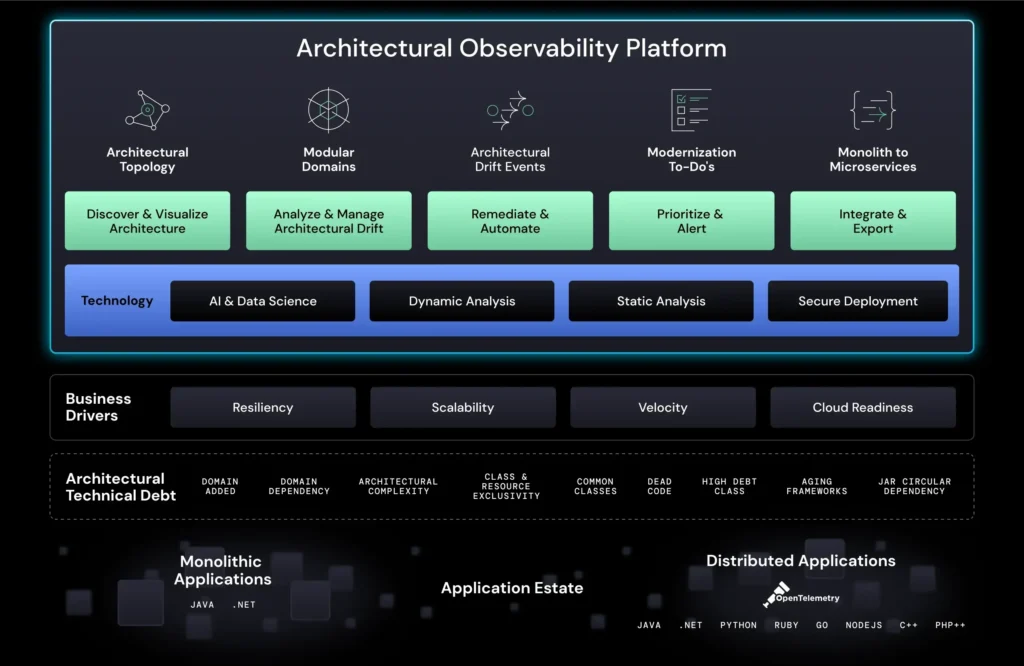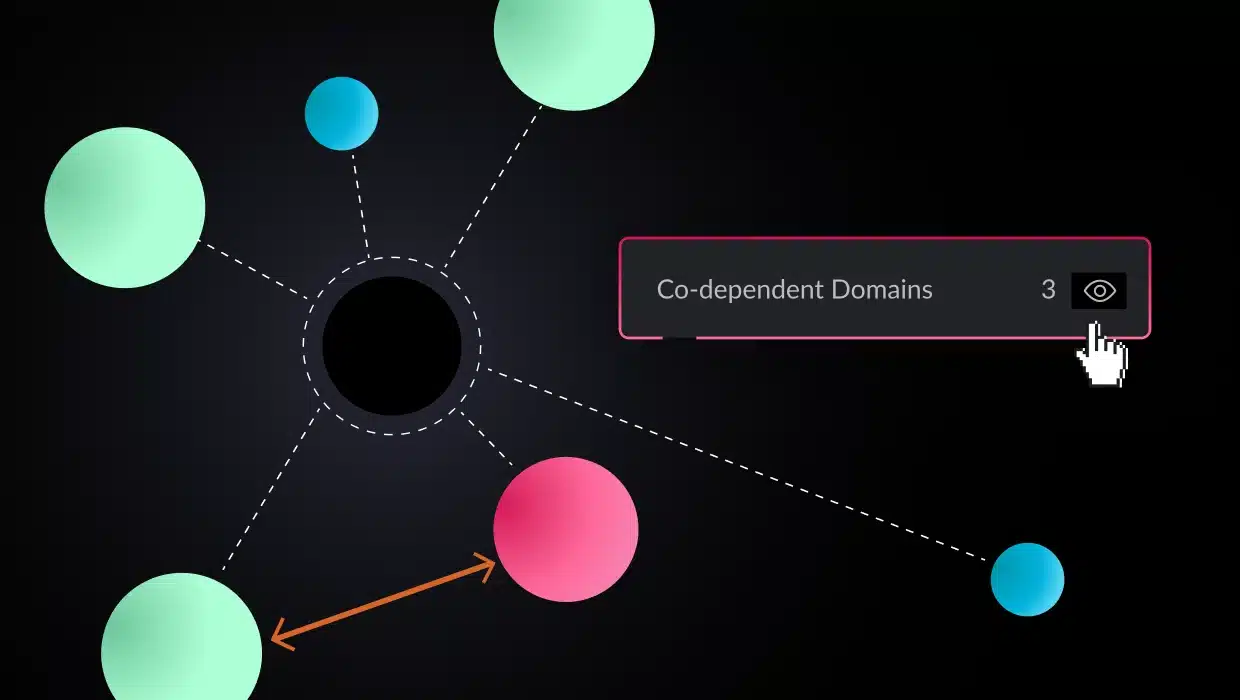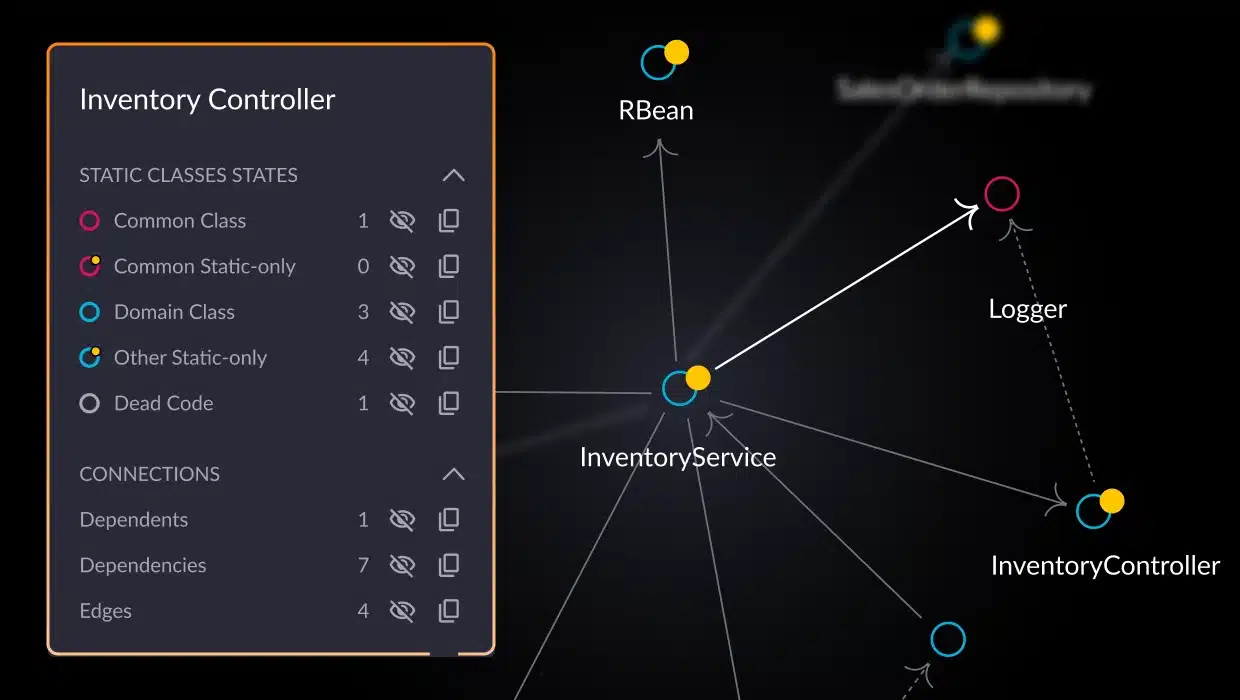Suppose your day revolves around designing and improving the architecture of new and existing applications. In that case, you know how important your decisions are regarding application scalability and stability. Where complexity is the norm, having a solid architectural foundation is the key to building great apps. Software architecture is the blueprint that determines how a system is structured, how its components interact, and how it evolves. A well-designed architecture ensures your software is functional, scalable, maintainable, and adaptable to changing requirements.
Software architecture tools empower architects and developers to design, analyze, and optimize these intricate architectural blueprints. They provide the visual language and analytical capabilities to translate abstract concepts into concrete plans. In 2024, tools with unique strengths and specializations are available. Whether you’re building a monolithic application or a complex microservices ecosystem, the right tools can significantly impact the success of your project. These tools can also play a crucial role in enterprise architecture, ensuring the software systems you build align with the organization’s broader business and technology strategies.
In this blog post, we’ll dive into software architecture tools, exploring what they are, how they work, and the different types available. We’ll then look further at five of the best tools for architects to add to their toolkit for 2024, highlighting each tool’s features and benefits. By the end, you’ll be well-equipped to choose the tools that suit your architectural needs and enhance your applications.
What is a software architect?
Whether you strictly define a role, such as at large organizations, or more loosely, like when a developer steps up to design a system, software architects come in different forms. Regardless of how you define the role internally, the software architect is crucial in designing and leading the effort to create scalable software that aligns with business and technical goals. They are responsible for defining a software system’s overall structure and design. This involves making critical decisions about organizing a system, how its components will interact, and how it will meet functional and nonfunctional requirements (like performance, scalability, and security).
For a software architect to be successful, ideally, they possess a unique blend of technical expertise, strong communication skills, and a deep understanding of business objectives. They must work closely with stakeholders to translate business needs into technical solutions. Weaving it all together, architects ensure that the software they build aligns with the organization’s overall strategic goals and delivers the functionality required.
A great software architect is a visionary who sees the big picture. They can see the high-level mission the application must fulfill and the intricate details it will take to achieve that state. They create the blueprint that guides and powers the development team in building software that is robust, efficient, and adaptable to future changes.
What is a software architecture tool?
Modern architects don’t just base their decisions on the knowledge they have in their heads. Most require tools to augment their decision and design process, helping them manage the massive array of tasks and decisions they face each day. Software architecture tools add a wide array of capabilities to the hands of architects, designed to assist in the design, analysis, visualization, and documentation of software architecture. They help provide a structured way to create, refine, and communicate the architectural vision for an application or portfolio of applications. This helps to ensure that developers and stakeholders can interpret the requirements and the direction of the application.
Various features and capabilities are available across the range of available tools. Most tools deliver one or more of the following features:
- Diagramming and modeling: Create visual representations of the software architecture using standard notations like UML (Unified Modeling Language), C4 Model, and others.
- Analysis and validation: Evaluate the architecture for potential issues like performance bottlenecks, security vulnerabilities, or maintainability challenges.
- Collaboration: Enable teams to collaborate on the architecture, sharing ideas, feedback, and real-time updates.
Depending on the organization and the project, you’ll need various tools to address different categories and responsibilities, which we will cover in more detail later in the blog. These tools are mostly separate from those an enterprise architect would use. Although there may be some overlap, enterprise architecture tools belong to a different class of tools that we won’t cover within the scope of this blog as we focus specifically on software architecture.
When it comes to choosing which tools an architect should use, the choice of a software architecture tool depends on various factors, such as the size and complexity of the project, the preferred modeling approach, and the specific needs of the development team. The last and sometimes most significant factor is the cost of the tool compared to the value it delivers. However, regardless of the tools chosen, the goal remains the same: to create a well-defined and understandable architecture that guides and ideally evolves with the development of an application toward success.
How does a software architecture tool work?
Software architecture tools streamline the design and analysis of software systems, typically following a common workflow. Here’s a concise overview of potential functions that software architecture tools may provide:
Input the architectural design
The architectural design must be input into the tool, either manually or through an integration. Some tools do this through visual diagrams, allowing users to create them using drag-and-drop interfaces. Other tools may enable users to input designs through code-like models or descriptive text for a more code-centric approach.
Analyze the architecture
Some tools can analyze and assess the application’s architecture. One way of doing this is through static analysis, which allows the tool to examine the code or model to identify vulnerabilities or anti-patterns. Tools may also perform dynamic analysis, monitoring the running application to uncover real-world dependencies, interactions, and performance bottlenecks.
Present insights
Tools may also present insights based on the data collected. Depending on the tool, these insights may come in the form of:
- Visual representations: Diagrams and models to simplify complex structures for stakeholders.
- Reports and dashboards: Provide a detailed overview of findings, highlighting potential issues and tracking metrics.
- Collaboration tools: Enable team members to share, comment, and discuss the architecture to ensure a shared understanding.
These insights are where tools can deliver value to architects. It allows architects and other stakeholders to have a condensed view of all the facets of existing or soon-to-be-implemented architectures.
Integration with development tools
Some tools allow easy integration within SDLC processes. For instance, certain tools can integrate directly into IDE (Integrated Development Environments) and CI/CD pipelines. This can enable architects and developers to access real-time analysis, automated testing, and code generation based on the architectural model. Architects can ensure consistency between design and implementation by integrating the tools within the SDLC.
Software architecture tools bridge the gap between design concepts and practical implementation, empowering architects and developers to create scalable, efficient, and maintainable applications. Although tools vary in functionality, understanding their overall capabilities and how they plug into software architecture workflows is critical. Next, let’s look at the various tools available to architects.
Types of software architecture tools
Software architecture tools come in several flavors, each catering to specific architectural design and analysis aspects. Although tools may deliver functionality in various areas, such as the IBM Rational Software Architect suite, we can group these features into high-level categories. Here’s a breakdown of the main categories that most tools fit into:
Modeling and diagramming tools
These tools enable architects to visually represent the architecture of an application using diagrams and models. A collaborative diagramming tool allows multiple users to work on diagrams. They often support standard notations like UML (Unified Modeling Language), ArchiMate, and BPMN (Business Process Modeling and Notation). Some examples of these tools include PlantUML, StarUML, and draw.io, not to mention the tool many architects still rely on, for better or worse, Microsoft Visio.
Design and analysis tools
These tools go beyond visualization, offering capabilities to analyze the architecture for potential issues like performance bottlenecks, security risks, or maintainability challenges. Tools in this category include vFunction, Lattix, Structure101, and Sonargraph.
Cloud architecture design tools
These tools specifically focus on designing architectures for cloud-based systems, providing capabilities to model and analyze the deployment of applications on cloud platforms like AWS, Azure, or Google Cloud. Cloudcraft, Lucidchart, and Hava.io are tools that help architects work in these specific domains.
Collaboration and documentation tools
These tools facilitate collaboration among team members, enabling them to share, review, and discuss the architecture. They also help generate comprehensive documentation of an application’s architectural design. Architects use Confluence for this more broadly. However, tools such as C4-Builder and IcePanel also exist to cater more to the specific needs of architects and their teams.
Code analysis and visualization tools
These tools analyze an existing system’s source code to automatically generate architectural visualizations. They are useful for understanding the architecture of legacy systems or for verifying that the implementation aligns with the intended design. Once again, vFunction delivers these capabilities alongside other examples such as SonarQube and CAST.
Simulation and testing tools
These tools allow architects to simulate the system’s behavior based on the architectural model. This helps identify potential performance or scalability issues early in the design phase. Tools that support these functionalities include Simulink, jMeter, and Gatling.
Identifying the best tools for your project will depend on its specific needs. When choosing which tools to incorporate, consider factors such as the complexity of your architecture, the size of your team, your budget, and your preferred modeling approach. Generally, architects combine multiple tools to assist with the areas they must focus on while creating and delivering their vision to support and deliver a successful application.
Five best software architect tools of 2024
Powerful software architecture tools are available in 2024, each aiming to help architects with the design, analysis, and visualization of the systems they design and build. Below, let’s explore the five best tools software architects can leverage to help them build scalable and understandable architectures for their evolving applications.
vFunction
vFunction is an AI-driven dynamic and static analysis platform that introduces architectural observability to optimize cloud-based microservices, modernize legacy monolithic applications, and address technical debt in any architecture. It goes beyond static code analysis by analyzing the application’s runtime behavior to identify the actual real-time dependencies and interactions between components.
Key features:
- Dynamic analysis: Analyzes runtime behavior to identify actual dependencies and interactions.
- Domain identification: Automatically identifies boundaries of business domains in the application based on runtime data. These can later be used to initiate the modernization of a monolithic application into microservices.
- Managing dependencies: Guides refactoring code to align with modularity principles.
- Monitor drift: Tracks the application architecture over time and informs the users when it drifts from the established baseline.
Highlights:
- Applies to both monolithic and distributed apps.
- Offers an accurate view of the architecture based on real-world usage, not singular visualizations or one-time blueprints.
- Significantly reduces the time and effort required for application modernization.
- Accelerates and derisks manual refactoring by automating code copy, generating endpoints, client libraries, API specs, and upgrade recipes for known frameworks.
PlantUML
PlantUML is an open-source tool for creating UML diagrams using a simple, text-based language. It’s a popular choice among architects and developers who prefer a lightweight, code-centric approach to diagramming.
Key Features:
- Text-based syntax: Create diagrams by writing simple text descriptions.
- Wide range of diagram types: Supports various UML diagrams, including class diagrams, sequence diagrams, use case diagrams, flowcharts, and more.
- Integration: Easily integrates with popular IDEs and documentation tools.
Highlights:
- Lightweight and easy to learn.
- Excellent for version control and collaboration due to its text-based nature.
- Generates high-quality diagrams.
Visio
Visio is a versatile diagramming tool from Microsoft, widely used for creating various diagrams, including software architecture diagrams. It offers a user-friendly interface and a vast library of shapes and templates.
Key Features:
- Drag-and-drop interface: Create diagrams easily by dragging and dropping shapes.
- Extensive template library: Access a wide range of templates for various types of diagrams.
- Integration with Microsoft Office: Seamlessly integrate with other Microsoft Office tools.
Highlights:
- User-friendly interface, suitable for both technical and non-technical users.
- Wide range of diagram types and templates.
- Strong integration with other Microsoft tools.
SonarQube
SonarQube is a popular open-source platform for continuous code quality inspection. It helps maintain architectural integrity by identifying code smells, bugs, vulnerabilities, and technical debt.
Key Features:
- Code analysis: Analyzes code for various quality metrics and potential issues.
- Customizable rules: Define your own rules to enforce specific architectural guidelines.
- Reporting and dashboards: Provides detailed reports and dashboards to track code quality trends.
Highlights:
- Helps maintain code quality and architectural integrity.
- Highly customizable and extensible.
- Supports a wide range of programming languages.
CAST Software
CAST Software provides a suite of tools for analyzing software architecture and identifying potential risks and inefficiencies. It goes beyond code analysis, offering a comprehensive view of the architecture’s quality, complexity, and maintainability.
Key Features:
- Architecture analysis: Evaluates the architecture for structural flaws, design anti-patterns, and potential risks.
- Software intelligence: Provides insights into the complexity, technical debt, and maintainability of the software system.
- Compliance checks: Verifies that the architecture adheres to industry standards and best practices.
Highlights:
- Offers deep insights into the quality and maintainability of the architecture.
- Helps identify potential risks and technical debt early in the development cycle.
- Supports a wide range of technologies and frameworks.
Conclusion
In the ever-evolving landscape of software development, software architecture tools are pivotal in shaping project success. They empower architects and developers to design, analyze, visualize, communicate, and evolve architectural blueprints clearly and precisely.
The tools we’ve explored in this blog post – vFunction, PlantUML, Visio, SonarQube, and CAST Software – represent a diverse range of options, each catering to specific needs and preferences. Whether you’re modernizing legacy applications, diagramming complex systems, ensuring code quality, or analyzing architectural risks, there’s a tool out there that can elevate your software development process.

As an architect working on various software projects, it’s important to assess your architectural needs and choose the tools that best align with your goals. By leveraging the power of these tools, you can ensure that the architecture on which your applications are built is not only functional but also scalable, maintainable, and adaptable.
A versatile tool in the hands of a skilled architect can transform a vision into reality. A tool like vFunction ensures your application is built on top of a solid architecture, even as it changes from release to release.Want to learn more? Contact us to discuss how vFunction works within your existing ecosystem to make your applications more resilient and scalable.






